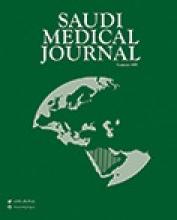Abstract
OBJECTIVE: Myasthenia Gravis is a neuromuscular disorder characterized by weakness and fatigability of skeletal muscles. Thymectomy is now beneficial even for non-thymomatous patients. The aim of this paper is to evaluate the role of thymectomy as on the treatment options for myasthenia gravis.
METHODS: Thirty patients underwent thymectomy in the period from April 1999 through to July 2000. They were collected from different teaching hospitals in Baghdad, Iraq. All these cases were studied conventionally including history, physical and neurological examination in addition to investigations with particular emphasis on connective tissue screen and thyroid function test.
RESULTS: The age in this study ranged between 17-55 years. The preoperative duration ranged between 2-20 months and the postoperative follow up period ranged between 6 months-14 years. The most favorable results were obtained in patients without thymoma with short duration.
CONCLUSION: Early thymectomy carries the best results in Myasthenia Gravis and every effort should be made to shorten the preoperative duration for both thymomatous and nonthymomatous patients. Patients with symptoms can be better controlled with anticholinesterase drugs than patients using steroid and cytotoxic drugs. Thymectomy is beneficial for most patients with Myasthenia Gravis and especially in those with benign folicular hyperplasia.
- Copyright: © Saudi Medical Journal
This is an open-access article distributed under the terms of the Creative Commons Attribution-Noncommercial-Share Alike 3.0 Unported, which permits unrestricted use, distribution, and reproduction in any medium, provided the original work is properly cited.






